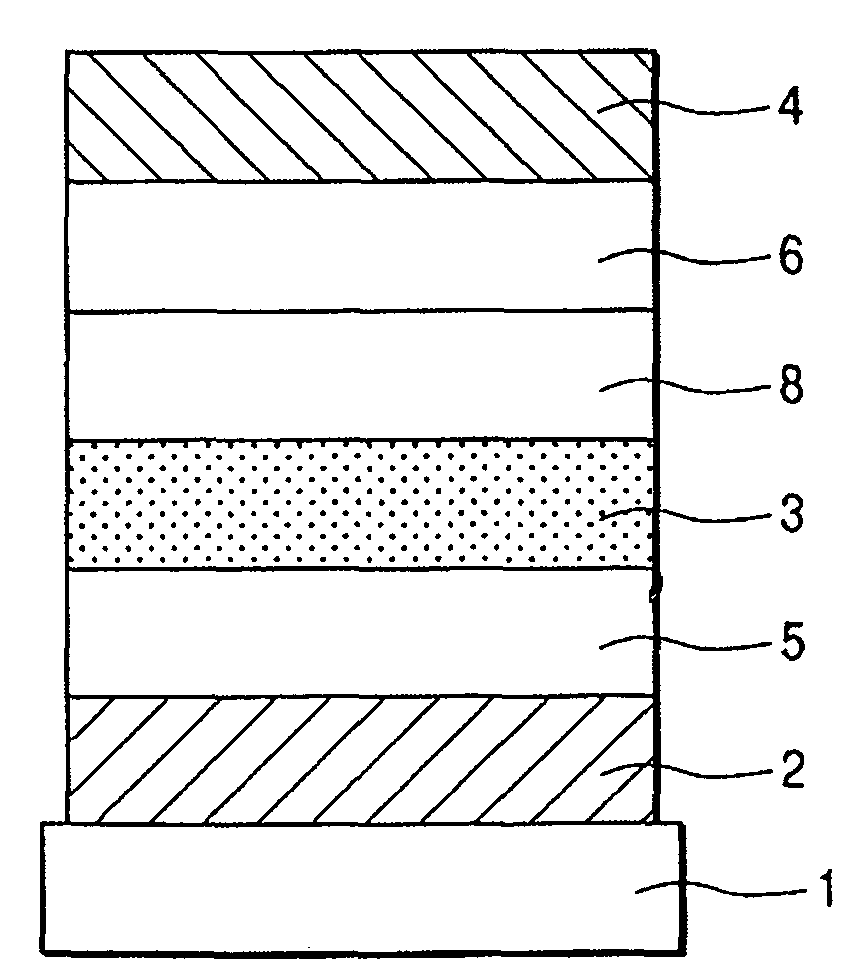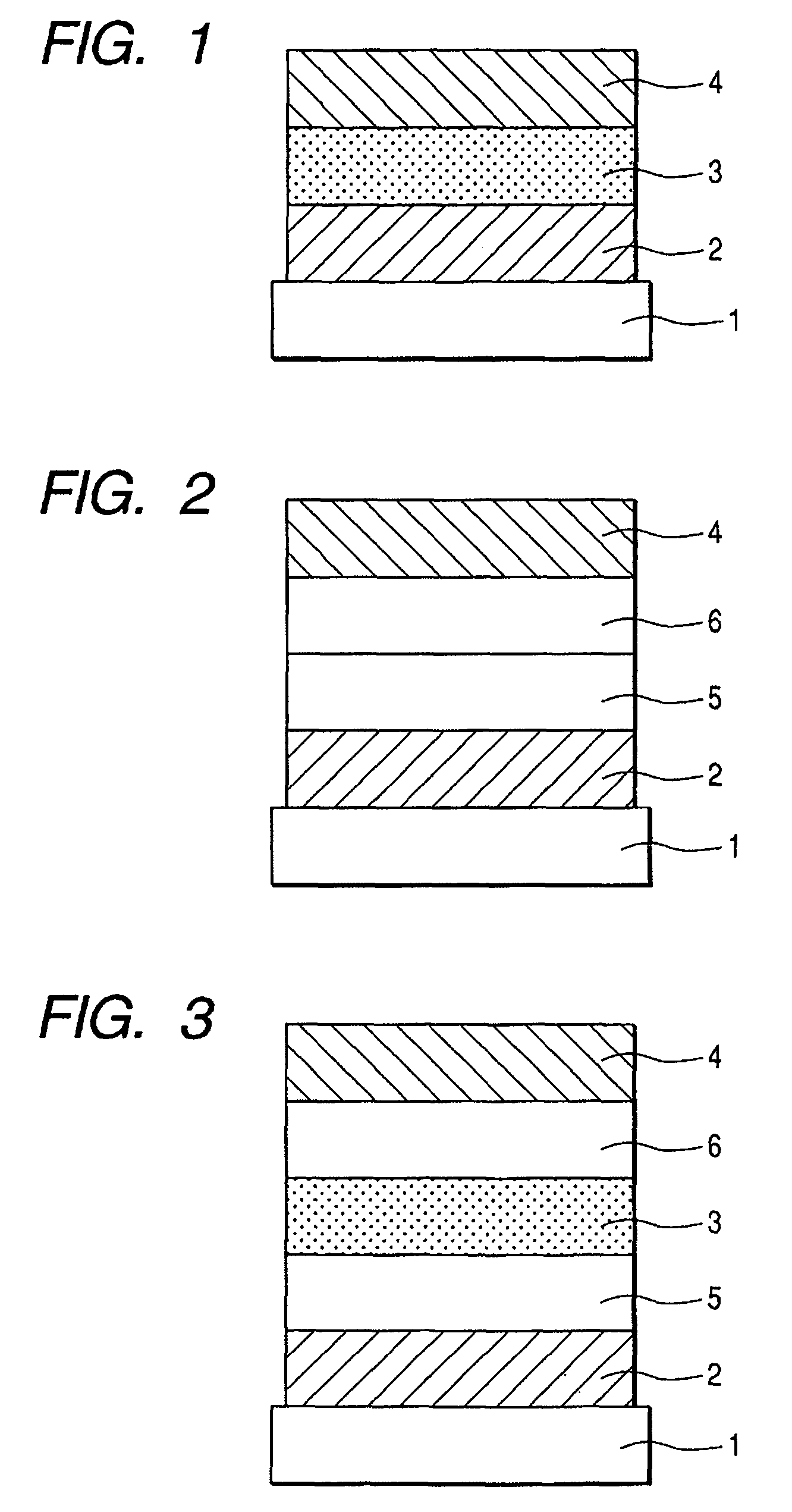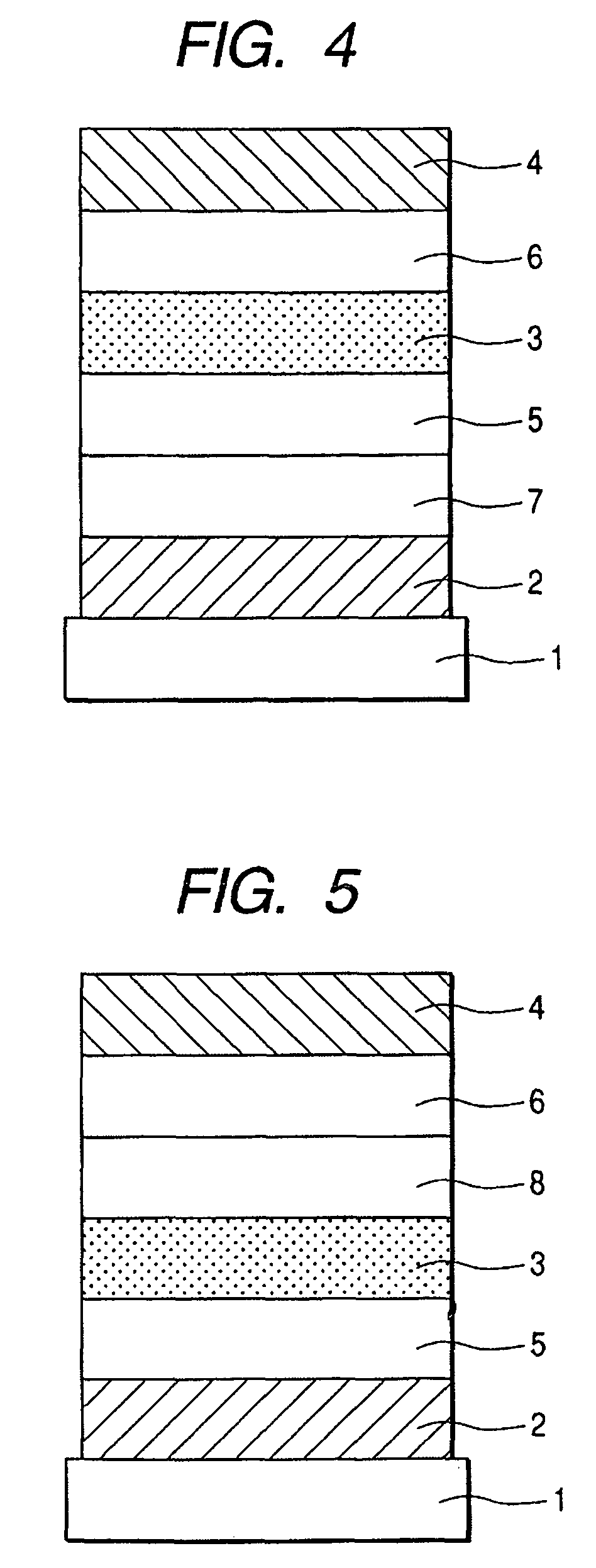Fluorene compound and organic light-emitting device
a fluorene compound and organic light-emitting technology, applied in the direction of discharge tube luminescnet screen, other domestic articles, natural mineral layered products, etc., can solve the problems of low external quantum efficiency, durability and lifetime, and the device cannot meet the requirements of satisfactory solutions, so as to achieve high light emission efficiency, and efficient electron transport
- Summary
- Abstract
- Description
- Claims
- Application Information
AI Technical Summary
Benefits of technology
Problems solved by technology
Method used
Image
Examples
example 1
Synthesis of Exemplified Compound A-7
[0125]
a) Synthesis of Raw Material J-1
[0126]A 500 ml three-neck flask was charged with 9.6 g (24.1 mmol) of 2-iodo, 7-bromo-9,9-dimethylfluorene, 8.0 g (24.4 mmol) of pyrene-1-pinacolborane, 200 ml of toluene and 20 ml of ethanol. With stirring under nitrogen atmosphere at room temperature, an aqueous solution of sodium carbonate 20 g / water 120 ml was added thereto dropwise, and then 0.25 g (0.20 mmol) of tetrakis(triphenylphosphine)palladium (0) was added thereto. The mixture was heated to 77° C. and stirred for 5 hours. After the reaction, the organic layer was extracted with toluene and dried over anhydrous sodium sulfate, and the resultant was purified using a silica gel column (heptane+toluene mixed developing solvent) to obtain 7.5 g of compound J-1 (white crystal) (yield 66.2%).
b) Synthesis of Exemplified Compound A-7
[0127]A 200 ml three-neck flask was charged with 0.80 g (1.70 mmol) of compound J-1, 0.93 g (3.40 mmol) of 4-diphenylaminobe...
example 2
Synthesis of Exemplified Compound A-2
[0128]
[0129]A 200 ml three-neck flask was charged with 0.80 g (1.70 mmol) of compound J-1, 0.75 g (3.40 mmol) of α-naphthylphenylamine, 0.65 g (6.80 mmol) of sodium tert-butoxide and 100 ml of xylene. With stirring under nitrogen atmosphere at room temperature, thereto was added 34.4 mg (0.17 mmol) of tri-tert-butylphosphine and then 48.9 mg (0.085 mmol) of palladium dibenzylideneacetone. The mixture was heated to 125° C. and stirred for 3 hours. After the reaction, the organic layer was extracted with toluene and dried over anhydrous sodium sulfate, and the resultant was purified using a silica gel column (heptane+toluene mixed developing solvent) to obtain 0.642 g of exemplified compound A-2 (white crystal) (yield 61.6%).
example 3
Synthesis of Exemplified Compound A-32
[0130]
a) Synthesis of compound J-2
[0131]A 300 ml three-neck flask was charged with 2.50 g (5.31 mmol) of compound J-1, 0.926 g (10.0 mmol) of tert-butyl chloride and 100 ml of dichloromethane. With stirring at 0° C., 0.733 g (5.50 mmol) of aluminum chloride was added thereto in small portions. After stirring at 0° C. for 30 minutes, the mixture was heated to room temperature and stirred for 3 hours. After the reaction, the organic layer was poured into 200 ml of water, extracted with chloroform and dried over anhydrous sodium sulfate, and the resultant was purified using a silica gel column (heptane+toluene mixed developing solvent) to obtain 2.33 g of compound J-2 (white crystal) (yield 82.3%).
b) Synthesis of Exemplified Compound A-32
[0132]Exemplified compound A-32 was synthesized in the same manner as in Example 2 using compound J-2 instead of compound J-1.
PUM
| Property | Measurement | Unit |
|---|---|---|
| temperature | aaaaa | aaaaa |
| thickness | aaaaa | aaaaa |
| thickness | aaaaa | aaaaa |
Abstract
Description
Claims
Application Information
 Login to View More
Login to View More - R&D
- Intellectual Property
- Life Sciences
- Materials
- Tech Scout
- Unparalleled Data Quality
- Higher Quality Content
- 60% Fewer Hallucinations
Browse by: Latest US Patents, China's latest patents, Technical Efficacy Thesaurus, Application Domain, Technology Topic, Popular Technical Reports.
© 2025 PatSnap. All rights reserved.Legal|Privacy policy|Modern Slavery Act Transparency Statement|Sitemap|About US| Contact US: help@patsnap.com



